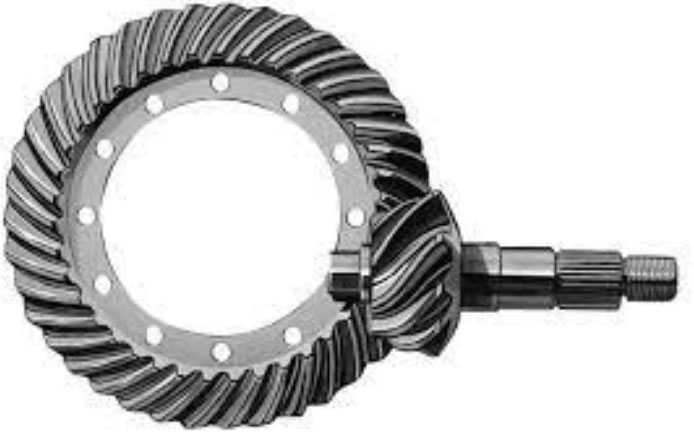
Hypoid gear systems can generate noise due to various factors such as gear meshing, vibration, and operating conditions. Implementing noise reduction techniques is crucial to improve the acoustic performance of hypoid gear systems. Here are some common techniques used to reduce gear noise in hypoid gear systems:
- Gear Tooth Profile Optimization: Optimizing the tooth profile design can help minimize gear noise. Modifying the tooth geometry, such as tooth contact pattern and tooth surface finish, can reduce noise by improving the gear meshing characteristics and reducing vibration.
- Surface Treatment and Coatings: Applying specific surface treatments and coatings to the gear teeth can help reduce friction and noise. Techniques like shot peening or superfinishing the gear tooth surfaces can enhance the load-carrying capacity and reduce surface roughness, resulting in reduced gear noise.
- Gear Pair Preloading: Applying preloading or axial offset to the gear pair can improve contact conditions and reduce noise. This technique helps distribute the load more evenly across the gear teeth, minimizing localized contact and reducing noise generation.
- Optimized Lubrication: Proper lubrication is crucial for reducing gear noise. Using high-quality lubricants with appropriate viscosity and additives can improve the lubrication film thickness, reduce friction, and dampen noise. Lubrication also helps dissipate heat generated during gear operation, reducing the risk of gear failure.
- Damping Elements: Incorporating damping elements, such as elastomeric or viscoelastic materials, in the gear system can help absorb vibration and reduce noise. These elements can be placed at strategic locations, such as between the gear teeth or within the gearbox housing, to effectively dampen the noise generated by gear meshing.
- Precision Manufacturing and Assembly: Ensuring precise manufacturing and assembly processes is crucial for reducing gear noise. Tighter tolerances, proper alignment, and accurate assembly techniques help minimize gear misalignment, eccentricity, and other sources of noise.
- Gear Housing Design: Optimizing the design of the gear housing can help reduce noise transmission. Adding insulation or sound-absorbing materials to the housing can help dampen noise and prevent its propagation to the surrounding environment.
- Operational Considerations: Operating conditions, such as gear speed, load distribution, and lubrication temperature, can influence gear noise. Optimizing these operational parameters can help minimize gear noise and ensure smooth gear operation.
It is important to note that the specific noise reduction techniques employed may vary depending on the application and the specific requirements of the gear system. Consulting with gear manufacturers, acoustic experts, or engineering professionals with expertise in gear noise reduction can help identify the most suitable techniques for a given hypoid gear system.
